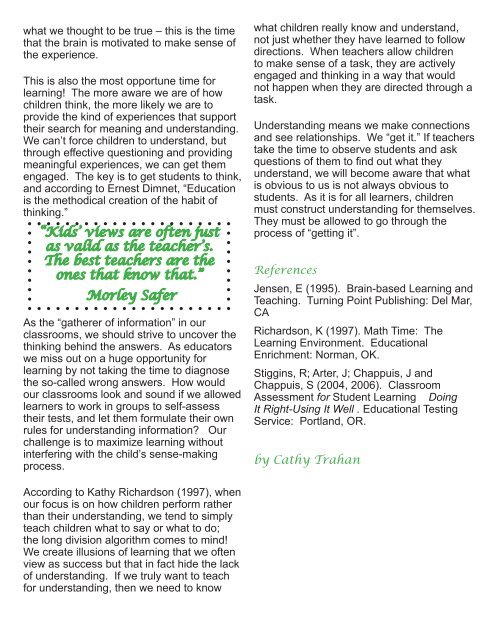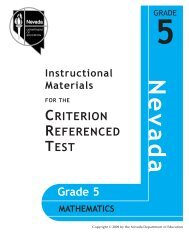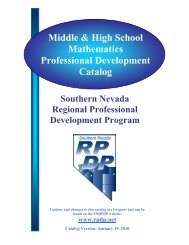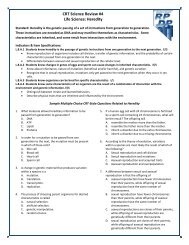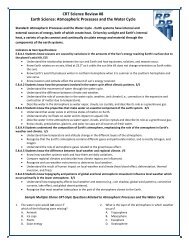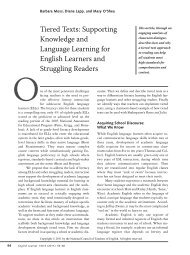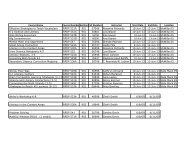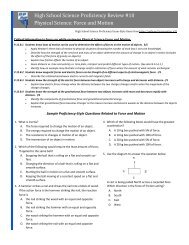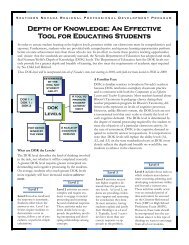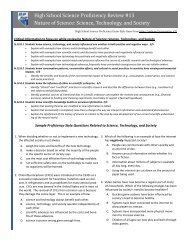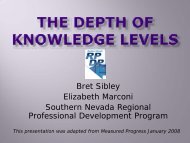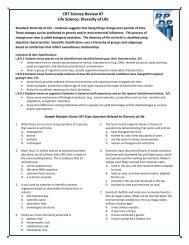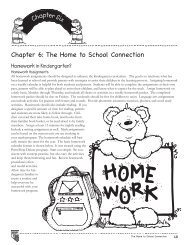Download - RPDP
Download - RPDP
Download - RPDP
You also want an ePaper? Increase the reach of your titles
YUMPU automatically turns print PDFs into web optimized ePapers that Google loves.
what we thought to be true – this is the time<br />
that the brain is motivated to make sense of<br />
the experience.<br />
This is also the most opportune time for<br />
learning! The more aware we are of how<br />
children think, the more likely we are to<br />
provide the kind of experiences that support<br />
their search for meaning and understanding.<br />
We can’t force children to understand, but<br />
through effective questioning and providing<br />
meaningful experiences, we can get them<br />
engaged. The key is to get students to think,<br />
and according to Ernest Dimnet, “Education<br />
is the methodical creation of the habit of<br />
thinking.”<br />
“Kids’ views are often just<br />
as valid as the teacher’s.<br />
The best teachers are the<br />
ones that know that.”<br />
Morley Safer<br />
As the “gatherer of information” in our<br />
classrooms, we should strive to uncover the<br />
thinking behind the answers. As educators<br />
we miss out on a huge opportunity for<br />
learning by not taking the time to diagnose<br />
the so-called wrong answers. How would<br />
our classrooms look and sound if we allowed<br />
learners to work in groups to self-assess<br />
their tests, and let them formulate their own<br />
rules for understanding information? Our<br />
challenge is to maximize learning without<br />
interfering with the child’s sense-making<br />
process.<br />
what children really know and understand,<br />
not just whether they have learned to follow<br />
directions. When teachers allow children<br />
to make sense of a task, they are actively<br />
engaged and thinking in a way that would<br />
not happen when they are directed through a<br />
task.<br />
Understanding means we make connections<br />
and see relationships. We “get it.” If teachers<br />
take the time to observe students and ask<br />
questions of them to find out what they<br />
understand, we will become aware that what<br />
is obvious to us is not always obvious to<br />
students. As it is for all learners, children<br />
must construct understanding for themselves.<br />
They must be allowed to go through the<br />
process of “getting it”.<br />
References<br />
Jensen, E (1995). Brain-based Learning and<br />
Teaching. Turning Point Publishing: Del Mar,<br />
CA<br />
Richardson, K (1997). Math Time: The<br />
Learning Environment. Educational<br />
Enrichment: Norman, OK.<br />
Stiggins, R; Arter, J; Chappuis, J and<br />
Chappuis, S (2004, 2006). Classroom<br />
Assessment for Student Learning Doing<br />
It Right-Using It Well . Educational Testing<br />
Service: Portland, OR.<br />
by Cathy Trahan<br />
According to Kathy Richardson (1997), when<br />
our focus is on how children perform rather<br />
than their understanding, we tend to simply<br />
teach children what to say or what to do;<br />
the long division algorithm comes to mind!<br />
We create illusions of learning that we often<br />
view as success but that in fact hide the lack<br />
of understanding. If we truly want to teach<br />
for understanding, then we need to know


